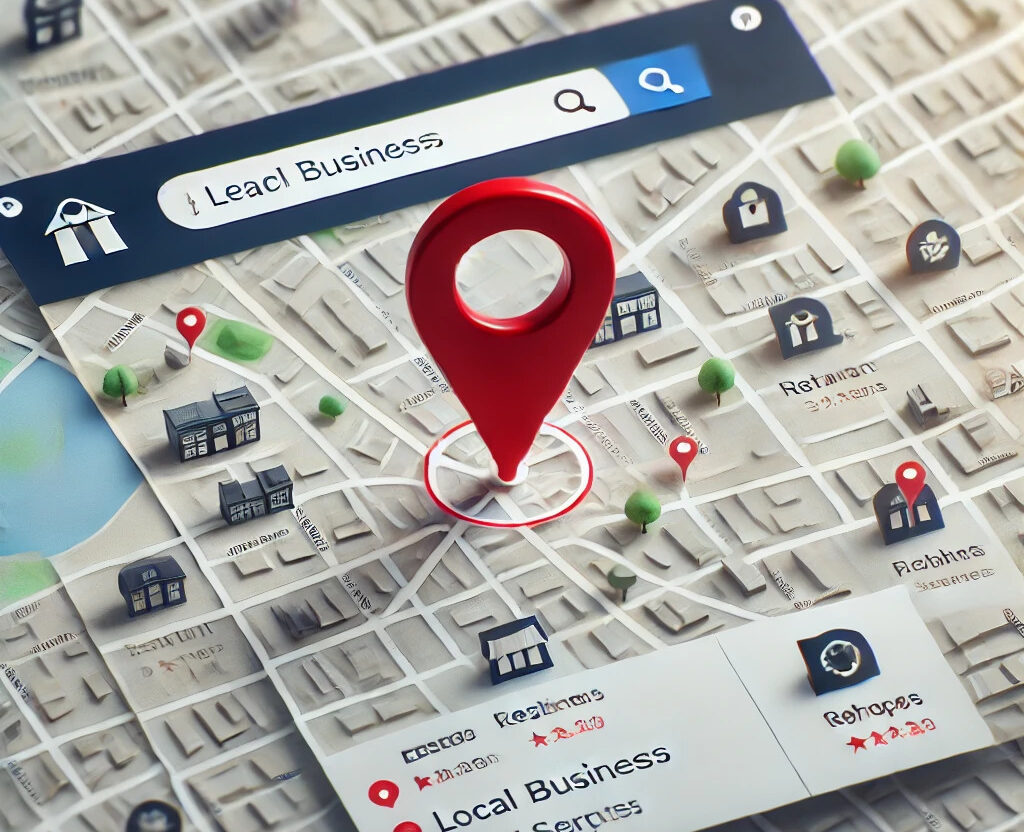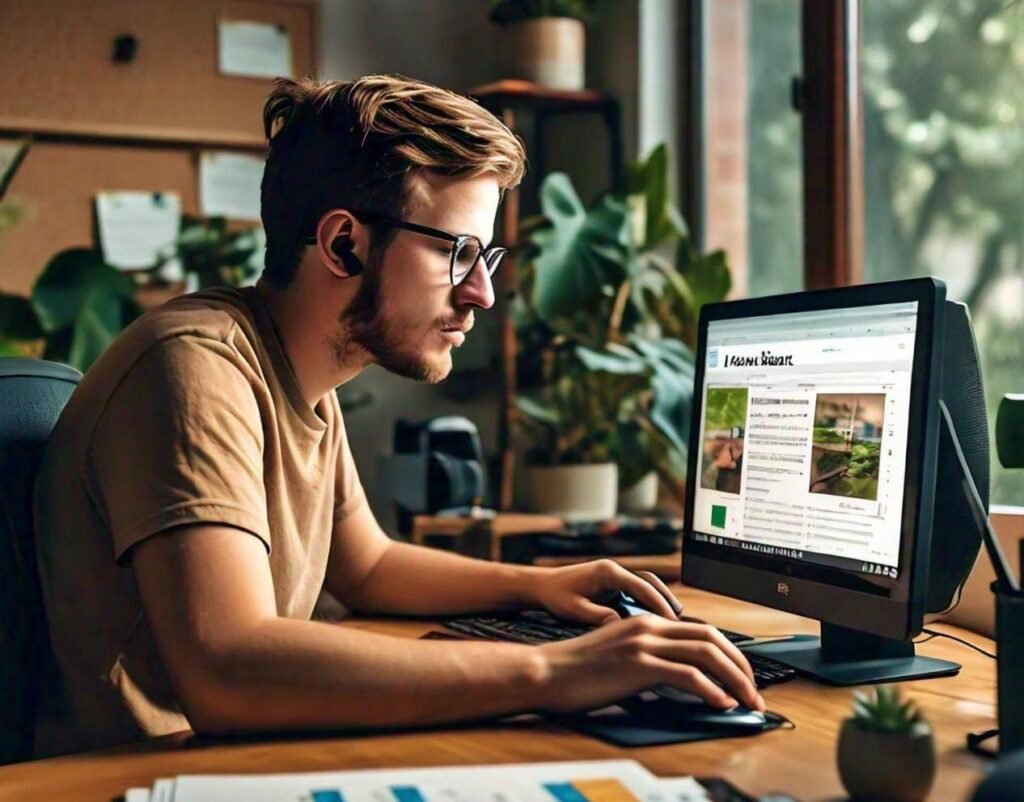Are you struggling to get your business noticed online? You’re not alone. In today’s digital landscape, local SEO is the secret weapon for small businesses. It’s time to unlock its potential and watch your visibility soar.
Table of Contents
Understanding the Power of Local SEO
Local SEO is your ticket to online success. It’s the art of optimizing your online presence to attract local customers. Why does it matter? Simple: people are searching for businesses like yours right now.
Think about it. When was the last time you searched for a “coffee shop near me” or “best plumber in [your city]”? That’s local search intent in action. It’s driving consumer behavior more than ever before.
By mastering local SEO, you’re not just keeping up with the competition. You’re sprinting ahead of them. It’s your chance to stand out in a crowded market and grab those valuable local customers.

Optimizing Your Google Business Profile (Formerly Google My Business)
Your Google Business Profile (GBP) is your digital storefront. It’s often the first impression potential customers have of your business. So, let’s make it count.
First things first: claim and verify your listing. It’s a simple process, but crucial. Here’s a quick step-by-step guide:
- Go to Google Business Profile Manager
- Sign in with your Google account
- Add your business name and address
- Choose your business category
- Add your phone number and website
- Verify your listing (usually by mail, phone, or email)
Now, let’s talk about NAP consistency. NAP stands for Name, Address, and Phone Number. It might sound boring, but it’s a local SEO goldmine. Ensure your NAP is identical across all online platforms. This consistency builds trust with both customers and search engines.
But don’t stop there. GBP is packed with features waiting to be leveraged. Post updates, showcase products, and list services. It’s free advertising – use it!
Reviews are the lifeblood of local businesses. Encourage happy customers to leave reviews. And when they do? Respond promptly and professionally. It shows you care and boosts your local SEO according to a study.
Local Keyword Research: The Foundation of Your SEO Strategy
Keywords are the building blocks of SEO. But for local businesses, it’s all about local keywords. These are the phrases your customers use to find businesses like yours in your area.
So, how do you find these golden keywords? Tools like Google Keyword Planner and Grexa’s Keyword Research Tool can help. Look for keywords with high search volume and low competition.
Don’t forget location-based terms. “Best pizza in Chicago” is more valuable to you than just “best pizza”. It’s specific and shows clear local intent.
Long-tail keywords are your secret weapon. These are longer, more specific phrases. They might have lower search volume, but they often convert better. “24-hour emergency plumber in downtown Seattle” is a great example.
On-Page SEO Optimization for Local Businesses
On-page SEO is where the rubber meets the road. It’s about making your website irresistible to both search engines and customers.
Let’s start with meta titles and descriptions. These are your first impression in search results. Make them count! Include your primary keyword and location. Keep it under 60 characters for titles and 145 for descriptions.
Header tags (H1, H2, H3) are like signposts for your content. Use them wisely. Include local keywords where it makes sense. But don’t force it – readability comes first.
For businesses with multiple locations, create specific landing pages for each. It’s a powerful way to target local searches. Each page should have unique content about that location.
Schema markup is like a cheat code for SEO. It helps search engines understand your content better. Local businesses can use it to highlight things like address, opening hours, and reviews. According to Search Engine Journal, schema can boost your click-through rates significantly.
Content Strategy: Connecting with Your Local Audience
Content is king, but local content is the emperor. It’s your chance to show that you’re not just a business, but a part of the community.
Start by creating a content calendar focused on local events and interests. Is there a big festival coming up? Write about it. New local legislation affecting your industry? Break it down for your readers.
Create location-specific blog posts and articles. “Top 10 Hidden Gems in [Your City]” or “A Local’s Guide to [Your Neighborhood]” can work wonders. It shows you know and love your area.
User-generated content is gold for local SEO. Encourage customers to share photos, reviews, or stories about their experience with your business. It’s authentic, engaging, and search engines love it.
Building a Strong Local Citation Profile
Citations are mentions of your business name, address, and phone number on other websites. They’re like digital breadcrumbs leading customers to your door.
Why are they important? They validate your business to search engines. The more consistent citations you have, the more trustworthy you appear.
Start with the big players: Yelp, Yellow Pages, and BBB. Then move on to industry-specific directories. Own a restaurant? Get listed on TripAdvisor and OpenTable.
Consistency is key. Use a tool like Grexa’s Citation Builder to ensure your information is identical across all platforms. It’s tedious work, but it pays off in local SEO dividends.
Local Link Building: Strengthening Your Online Authority
Links are the currency of the internet. The more quality links pointing to your site, the more authoritative you appear to search engines.
For local businesses, local links are gold. Start by identifying local link building opportunities. Sponsor a local event. Join the chamber of commerce. Partner with other local businesses for cross-promotion.
Guest posting on local blogs is another great strategy. Share your expertise and get a valuable backlink in return. It’s a win-win.
Don’t forget about local media. If you’re doing something newsworthy, reach out to local journalists. A mention in a local news article can boost your SEO and your reputation.
Harnessing the Power of Social Media for Local SEO
Social media and local SEO go hand in hand. It’s not just about posting cute pictures (though that helps). It’s about engaging with your local community.
Choose the right platforms for your business. Facebook and Instagram are great for visual businesses like restaurants or boutiques. LinkedIn might be better for B2B services.
Engage with your local community on these platforms. Share local news, comment on local events, and interact with other local businesses. It shows you’re an active part of the community.
While social signals aren’t a direct ranking factor, they do influence your local SEO. A study by Hootsuite found that social engagement correlates with higher search rankings.
Mobile Optimization: Catering to On-the-Go Local Searchers
In today’s world, if you’re not mobile-friendly, you’re not friendly at all. More and more local searches are happening on mobile devices.
Start by ensuring your website is responsive. It should look good and function well on screens of all sizes. Google’s Mobile-Friendly Test can help you identify any issues.
Voice search is changing the game for local SEO. Optimize for natural language queries. “Where’s the nearest coffee shop?” is more likely than “coffee shop near me” in voice searches.
Consider creating a mobile app for your business. It can improve user experience and boost your local SEO. Plus, it’s another way to engage with your customers.
Measuring and Analyzing Your Local SEO Success
You can’t improve what you don’t measure. Tracking your local SEO performance is crucial for success.
Key metrics to watch include:
- Local search rankings
- Google Business Profile views and actions
- Website traffic from local searches
- Conversion rates from local traffic
Tools like Google Analytics and Google Search Console are essential. They provide valuable insights into your performance.
Don’t just collect data – use it. Regularly review your metrics and adjust your strategy accordingly. SEO is not a set-it-and-forget-it task. It requires ongoing attention and optimization.

Advanced Local SEO Techniques
Ready to take your local SEO to the next level? Let’s dive into some advanced techniques.
Localized content silos can boost your relevance for specific areas. Create clusters of content around local themes or services. Interlink these pages to create a strong local content structure.
Optimizing for local pack and map results is crucial. These prime spots can dramatically increase your visibility. Ensure your Google Business Profile is fully optimized and encourage reviews to improve your chances of appearing here.
Leverage customer data for personalized experiences. Use location data to serve relevant content to visitors from different areas. It improves user experience and sends positive signals to search engines.
Future-Proofing Your Local SEO Strategy
The world of SEO is always evolving. Staying ahead of the curve is key to long-term success.
Keep an eye on emerging trends in local search. Voice search, augmented reality, and hyper-local targeting are all shaping the future of local SEO.
Be ready to adapt to algorithm updates and new Google features. The introduction of Google’s local pack shook up local SEO. Be prepared for similar changes in the future.
Stay ahead of your competition by continuously innovating. Experiment with new strategies, but always keep your local audience in mind.
Case Studies: Local SEO Success Stories
Let’s look at some real-world examples of local SEO in action.
Take Sarah’s Bakery in Portland. By optimizing their Google Business Profile and creating location-specific content, they saw a 150% increase in website traffic and a 75% boost in foot traffic.
Or consider Tom’s Plumbing in Chicago. They focused on building local citations and encouraging customer reviews. The result? A 200% increase in local leads and a top spot in local pack results.
These success stories share common themes: consistent effort, a focus on the local community, and a willingness to adapt to changes in the local SEO landscape.
Conclusion: Putting It All Together for Local SEO Domination
Local SEO is not a single task, but a comprehensive strategy. It’s about optimizing your online presence, engaging with your community, and providing value to your local customers.
Start by implementing these local SEO tips and tricks. Optimize your Google Business Profile, conduct thorough local keyword research, and create compelling local content. Build a strong citation profile, engage on social media, and don’t forget mobile optimization.
Remember, local SEO is a marathon, not a sprint. It requires ongoing effort and adaptation. But the rewards are worth it: increased visibility, more leads, and ultimately, business growth.
By investing in local SEO, you’re not just improving your search rankings. You’re connecting with your community and building a stronger, more resilient business. So what are you waiting for? It’s time to put your business on the local digital map!
FAQ
How long does it take to see results from local SEO efforts?
Results can vary, but many businesses start seeing improvements within 3-6 months of consistent effort. Significant changes may take 6-12 months or more.
Is it necessary to hire a professional for local SEO, or can I do it myself?
While many aspects of local SEO can be DIY, professional help can speed up results and avoid common pitfalls. Consider your time, budget, and expertise when deciding.
How often should I update my Google Business Profile?
Aim to update your GBP at least weekly with posts, photos, or responses to reviews. Regular updates signal an active business to both customers and search engines.
What’s the most important factor in local SEO?
While all factors are important, consistently accurate NAP (Name, Address, Phone) information across the web is crucial for local SEO success.